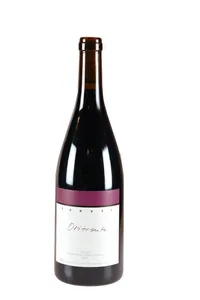Free delivery from Fr. 300 of purchase or 18 bottles, otherwise Fr. 15
Ticino
The Ticino vineyard covers barely a thousand hectares, but the dynamism of a certain number of winemakers has already earned it international recognition.
Thanks also, it must be said, to the good services of a shock ambassador, the Merlot grape variety: this one found in Ticino, at the beginning of the 20th century, a particularly favourable area of acclimatisation and currently covers 85% of the wine-growing surface of Ticino.
Geography here determines the wine landscape and the differences between the vintages. Divided by Monte Ceneri, Ticino is articulated around two main regions and divided into 8 districts: the Sopraceneri in the north (Bellinzona, Blenio, Riviera, Leventina, Locarno, Vallemaggia) and the Sottoceneri in the south (Lugano and Mendrisio).
This division into two major sub-regions does not, however, fully account for the diversity of the vineyards, which can differ greatly from one commune to another. To these regions can be added the Mesolcina, an Italian-speaking but Graubünden valley, which includes about 50 hectares of vines.
Blessed by the gods with an annual sunshine of just over 1000 hours per year, the Ticino vineyards are influenced by the Mediterranean. However, the Ticino vineyards are also subject to significant rainfall, with almost 1600 mm per year. These brief but violent rains make the task of the Ticino winegrowers, especially those who have turned to organic viticulture, more difficult. Fortunately, the Ticino vineyards are largely planted on porous soils with a high drainage capacity, especially in the Sopraceneri where acidic soils such as granite and gneiss are predominant. In the southern part, the morphology is more complex with numerous glacial deposits, volcanic sediments (San Salvatore) and, in the Mendrisiotto, which represents more than a third of the Ticino vineyards, calcareous sediments alternate with heavier soils with clayey matrices.
5 items

Ticino, Orizzonte, Christian Zündel - 2021
Merlot del Ticino

Ticino, Terraferma, Christian Zündel - 2022
Merlot del Ticino

Ticino, Terraferma, Christian Zündel - 2021
Merlot del Ticino

Ticino, Sass, Christian Zündel - 2021
Merlot del Ticino

Merlot del Malcantone, Montagna Magica, HuberVini - 2021
Merlot del Ticino
